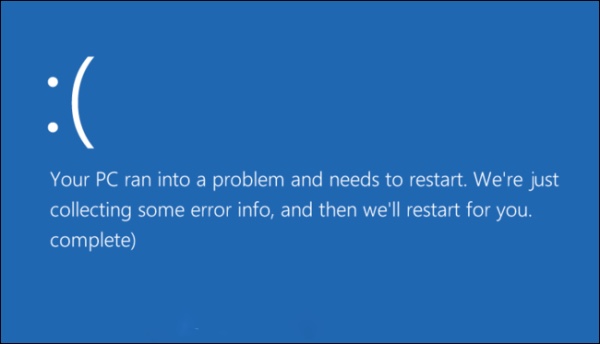Popular antivirus provider Avast has had to rush through a patch to fix an issue that was causing the dreaded “Blue Screen of Death” (BSoD) on some PCs running Windows 10 that have been updated to the latest Anniversary Update.
While most users running PCs with Windows 10 Anniversary Update were entirely unaffected by the software combination, but, much to the distain of Avast, updating to the Windows 10 Anniversary Update had caused a number of machines to go into meltdown via a kernel panic, resulting in the infamous Blue Screen of Death crash being thrust upon the eyes of the PC owner.

The patched Avast files are now known to solve the issue that had been affecting Windows 10 Anniversary Update machines with the antivirus software tool newly and already installed. In particular, the issue looks to have been exclusive to machines powered by Intel Skylake Virtualization Technology, which of course means that a huge majority portion of the Windows 10 Anniversary Update populous was likely unaffected.
Petr Chytil, Quality Assurance Direct at Avast, put the issue down to driver configuration. Here’s what exactly he had to say on the matter:
While the majority of our users didn’t have a problem, certain HW configurations didn’t mix well with the update. To be specific, when the Windows 10 Anniversary Update was combined with our aswvmm.sys driver on an Intel CPU from the Skylake family with Intel VT enabled in the BIOS, the update resulted in a blue screen of death.
Avast’s head of quality also confirmed that the issue had been thrust into prominence when affected machines were upgrading to Microsoft’s Windows 10 Anniversary Update:
This occurred during upgrades to the Windows 10 Anniversary edition from previous versions of Windows, and during clean installations of Avast Antivirus on systems already running the Anniversary Update.
In an effort to resolve the issue, Avast had reacted extremely quickly to reports of the Blue Screen of Death from users via its own forums. It was those reports, as well as the granularity of the information contained within, that allowed Avast to fix the problem and provide an updated patch that has been issued to all existing installations, and made part of new installations as well, that is as long as the users don’t use an offline installer, which will be updated later.
This updated patch should hopefully fix this problem for you. If not, uninstalling Avast for the time being might be your only resolve.
The Blue Screen of Death kernel panic may be a long-running joke amongst those who prefer to stay away from Windows, but it’s certainly no laughing matter when you receive a kernel panic purely from upgrading your OS.
You may also like to check out:
- Windows 10 Product Key And Activation: How To Find It And How It Works
- Download Windows 10 Pro ISO File Without Product Key From Microsoft
- Fix Windows 10 Anniversary Update Freeze Problem, Here’s How
- Download Windows 10 Anniversary Update Build 14393.51 KB3176495
You can follow us on Twitter, add us to your circle on Google+ or like our Facebook page to keep yourself updated on all the latest from Microsoft, Google, Apple and the Web.
